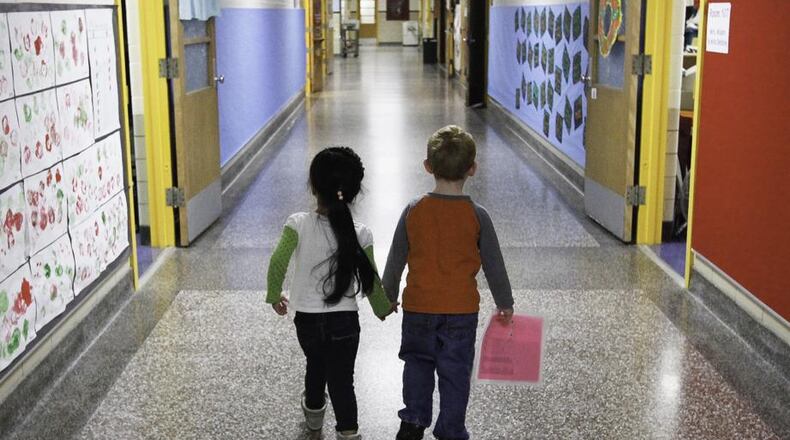JUNE STORY: Preschool Promise expands footprint, training
Preschool Promise Executive Director Robyn Lightcap said 33 percent of 2017-18 Preschool Promise students who then took the fall 2018 KRA in Dayton Public Schools scored in the highest band — demonstrating readiness. In comparison, only 21 percent of non-Preschool Promise students in that DPS kindergarten class scored in that band.
The same pattern appeared in Kettering City Schools, where 40 percent of Preschool Promise students later scored in the highest band on the KRA, compared with 29 percent of non-Preschool Promise students, according to Lightcap.
“That’s big news. It’s exciting because the Preschool Promise sites have been really committed to improving quality,” Lightcap said. “It’s evident that our teachers and administrators are working hard to say, we want to go above and beyond (Ohio’s) five-star rating system, and make sure our kids have the skills they need.”
2018 STORY: Preschool program cites success, targets racial gaps
Education research suggests readiness for kindergarten is a key marker, along with third-grade reading proficiency, toward children’s future educational success. Montgomery County has been funding preschool expansion efforts for years, and in 2016, Dayton voters approved an income tax hike with the city committing over $4 million per year toward Preschool Promise.
The agency provides both tuition assistance, to make preschool more affordable for families, and training for teachers and staff at local schools and childcare centers, to increase the quality of education children receive.
Last year, Preschool Promise’s own internal measures had showed similar hints at success, with 2017-18 students increasing scores from fall to spring on two assessments — one measuring basic letter/number/shape-type knowledge and another on “ability to control behavior, follow instructions and work with others.”
Last year, Preschool Promise officials expressed frustration at their inability to narrow racial achievement gaps yet. The group does not yet have a racial breakdown of KRA scores, but said racial gaps remain an issue.
PREVIOUS: Kindergarten readiness data by community
Lightcap said Preschool Promise’s heavy focus on training is paying off, as teachers as grading higher on the Classroom Assessment Scoring System that measures teacher-child interactions and effectiveness.
“Teachers who participate in our Preschool Promise training and coaching are improving their CLASS scores, and improvement in CLASS scores are correlated with growth on fall-to-spring assessments,” she said.
There are just more than 2,000 children attending Preschool Promise-affiliated sites this fall, up at least 200 from last year. Some of the increase comes from the program’s expansion into the Trotwood, Jefferson Twp. and Mad River school districts. Lightcap said enrollment in the city of Dayton is up by about 50 students this fall, and Preschool Promise is still trying to reach more families in East Dayton.
About the Author

